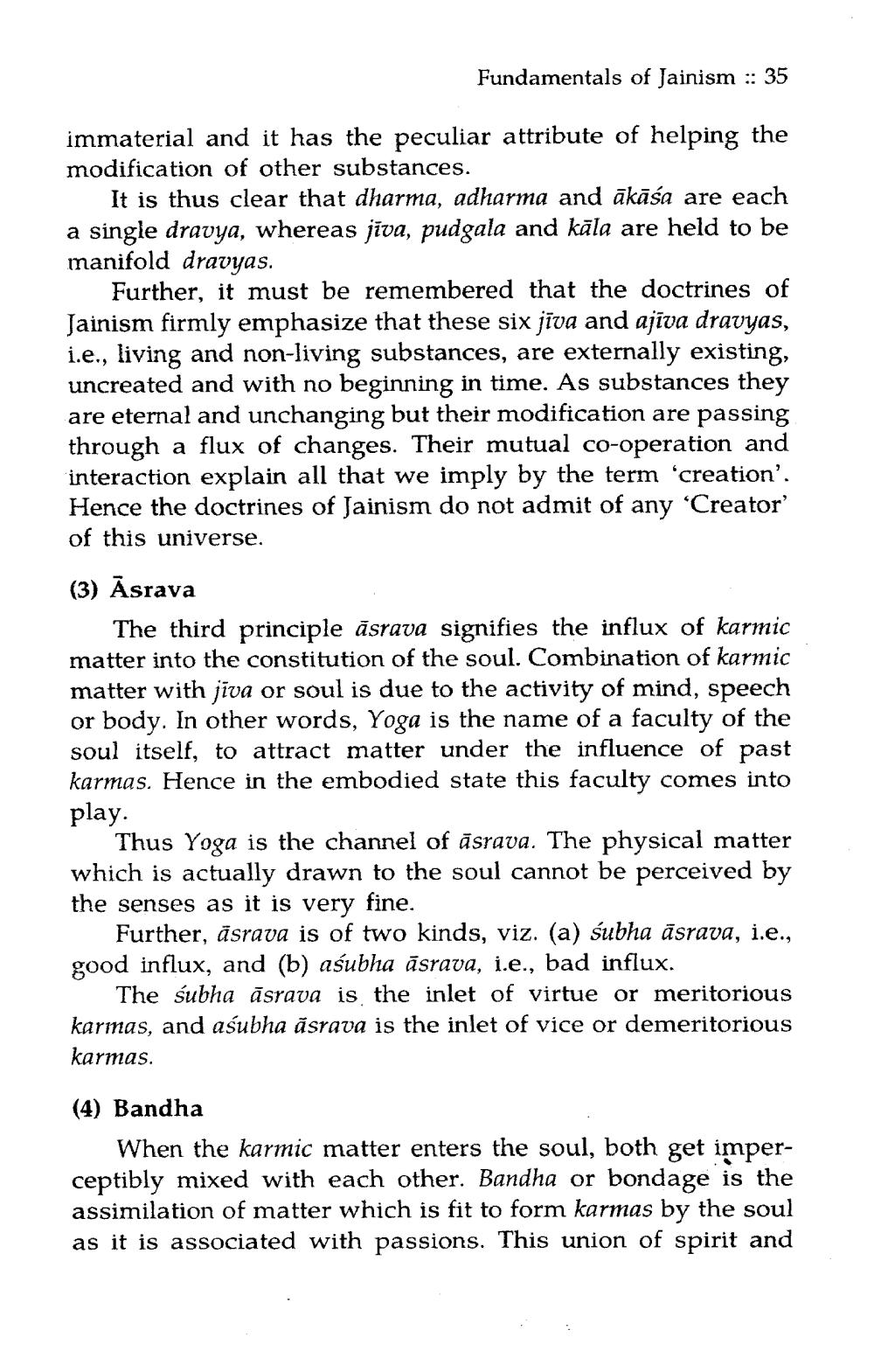________________
Fundamentals of Jainism :: 35
immaterial and it has the peculiar attribute of helping the modification of other substances.
It is thus clear that dharma, adharma and ākāśa are each a single dravya, whereas jīva, pudgala and kāla are held to be manifold dravyas.
Further, it must be remembered that the doctrines of Jainism firmly emphasize that these six jīva and ajīva dravyas, i.e., living and non-living substances, are externally existing, uncreated and with no beginning in time. As substances they are eternal and unchanging but their modification are passing through a flux of changes. Their mutual co-operation and interaction explain all that we imply by the term 'creation'. Hence the doctrines of Jainism do not admit of any Creator' of this universe.
(3) Āsrava
The third principle ásrava signifies the influx of karmic matter into the constitution of the soul. Combination of karmic matter with jīva or soul is due to the activity of mind, speech or body. In other words, Yoga is the name of a faculty of the soul itself, to attract matter under the influence of past karmas. Hence in the embodied state this faculty comes into play.
Thus Yoga is the channel of asrava. The physical matter which is actually drawn to the soul cannot be perceived by the senses as it is very fine.
Further, ăsrava is of two kinds, viz. (a) subha āsrava, i.e., good influx, and (b) aśubha asrava, i.e., bad influx.
The śubha āsrava is the inlet of virtue or meritorious karmas, and aśubha ăsrava is the inlet of vice or demeritorious karmas.
(4) Bandha
When the karmic matter enters the soul, both get imperceptibly mixed with each other. Bandha or bondage is the assimilation of matter which is fit to form karmas by the soul as it is associated with passions. This union of spirit and




